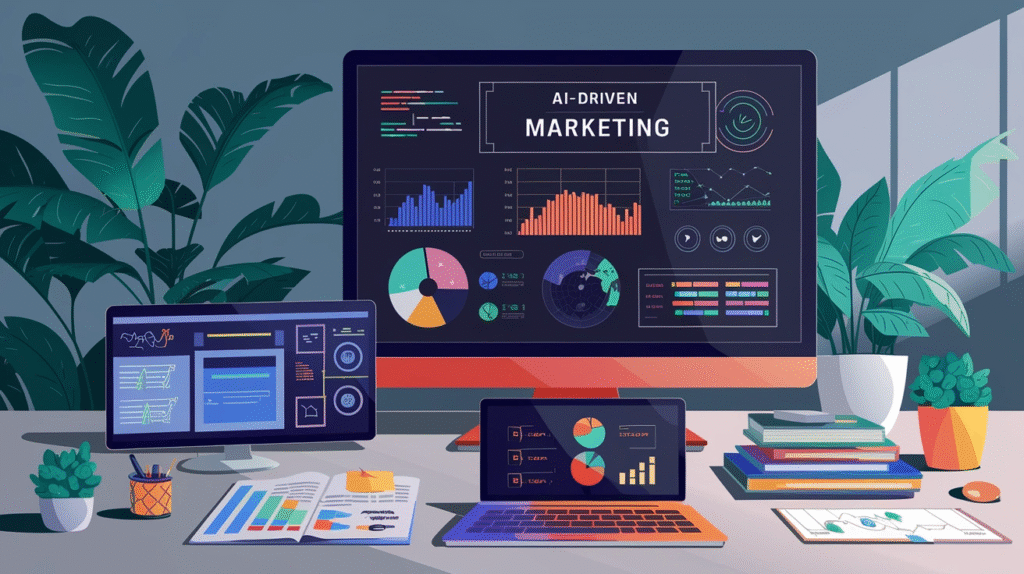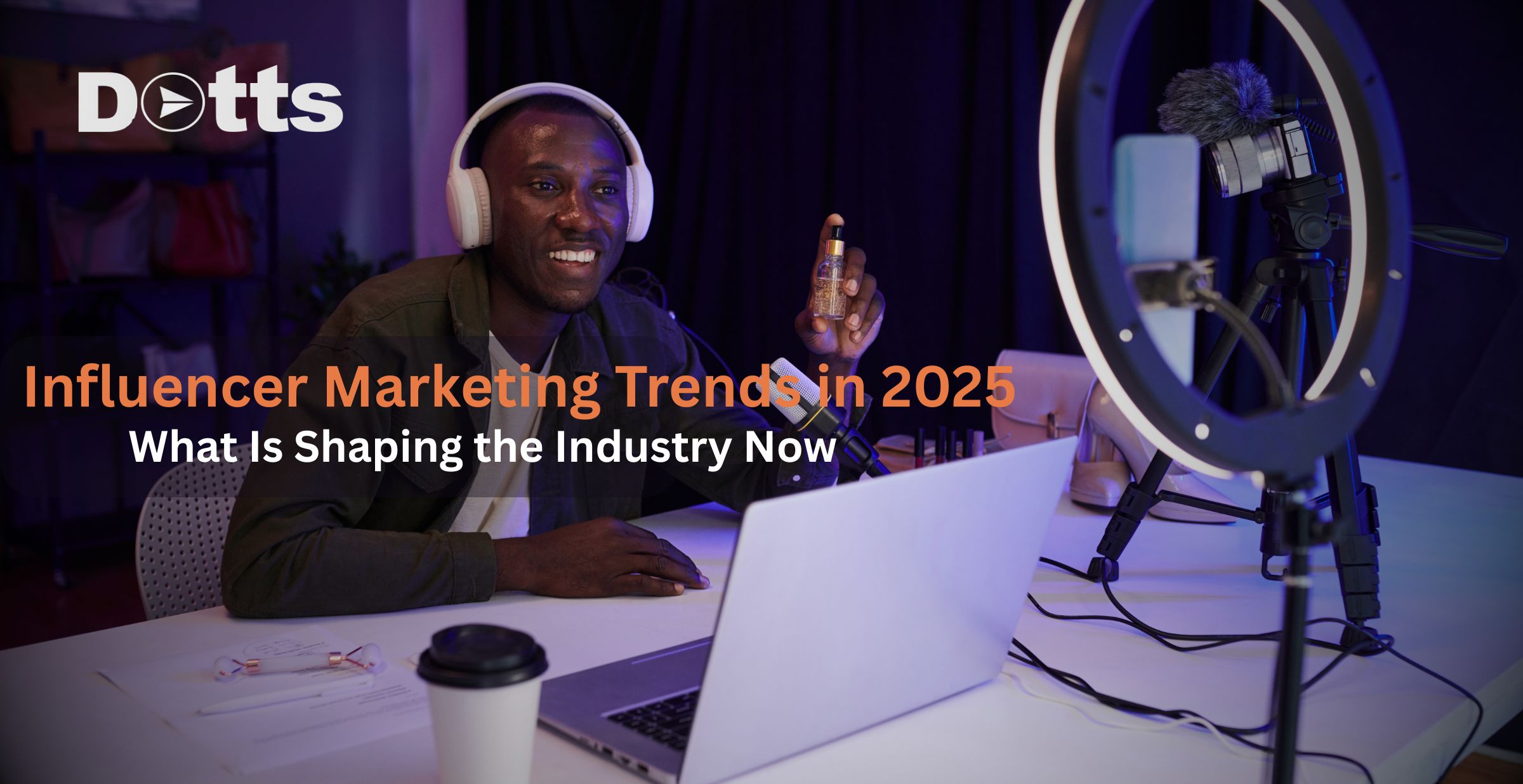Influencer marketing trends 2025 are highlighting a major shift in how African brands reach consumers. Report reveals that 60% of African millennials trust online influencers more than traditional advertisements.
Likewise, over 70% of social media users in Africa report that influencers affect their purchase decisions. In other words, the influencer’s voice is now a dominant part of the marketing funnel in Africa. Brand budgets have responded accordingly: one industry study notes that spending on influencers across Africa is growing by roughly 25% yearly. In this context of rapid change, marketers are turning to new strategies to stay on trend.
This article reveals six key influencer marketing trends shaping African markets, illustrated with regional examples and data-driven insights.
Six Influencer Marketing Trends in 2025
Here are six growing influencer marketing trends in 2025, with examples that provide more data-focused insights.
1. Rise on Micro and Nano Influencers
There is a growing trend toward how brands collaborate with creators with smaller, highly engaged niche audiences, as they tend to generate greater trust and stronger engagement than mega influencers.
Across Africa, companies are collaborating with micro- and nano-influencers to build credibility and reach niche communities. These local creators typically have smaller followings but very tight-knit audiences. In South Africa, for example, small businesses report an average return of R6 for every R1 spent on micro-influencer campaigns, a 600% ROI.
Globally, studies show about 42% of brands now collaborate with nano- or micro-influencers. This approach appeals especially in African markets, where budgets can be limited and authenticity matters more than celebrity glamour. Kenyan telecom Safaricom provides a case in point. For a recent Valentine’s campaign (#AccessorizeWithLove), Safaricom enlisted dozens of nano- and micro-influencers on Twitter, Instagram and TikTok. Instead of scripting ads, each creator made personal videos about gifts and love. The result was thousands of unique posts and over 4 million impressions, all driven by these grassroots influencers.
In Nigeria, brands are following suit: even TikTok personalities with just a few thousand followers can spark buzz if their content resonates with local culture. Building these “influencer fleets” of smaller creators allows African brands to spread risk, cover multiple niches, and tap into the deep trust these creators have earned.
2. Authentic and Relatable Content Taking Centre Stage
Content authenticity is a defining trend in 2025. African audiences are getting tired and fed up with forced and inorganic campaigns. South African social media research notes a clear shift away from scripted ads as consumers are now tilting towards real, unscripted stories over celebrity shoutouts and programmed ads.. In practice, this means that everyday influencers are in demand. They often share behind-the-scenes moments or personal advice, so brand endorsements feel “like a friend’s recommendation” rather than a sales pitch.
Nigerian marketers have embraced this trend. For example, Budweiser Nigeria’s “#SmoothForNaijaKings” invited local celebrities to share candid selfie photos with the hashtag. Each celeb styled themselves in an off-duty way, and fans joined in by posting their own casual snapshots.
The campaign combined celebrities (macro-influencers) with micro-influencers, expanding the loop of authenticity. The key was that these posts did not feel “paid,” but they felt part of the influencers’ normal social media life. This authentic storytelling approach drove strong engagement and organic sharing, illustrating that even in fast-growing markets, African consumers value authenticity over polished adverts.
3. Short-Form Video and Viral Culture Driving Engagement
Short videos and viral memes are reshaping how African brands work with creators. Platforms like TikTok, Instagram Reels, and YouTube Shorts are now where consumers “engage most”. Attention spans are short, and the content is driven by viral challenges, dances, and memes.
Brands that tap into these trends get a huge payoff. A striking example comes from South Africa’s retail sector. In 2024, grocery chain Checkers capitalised on the global frenzy around “Prime” energy drink (endorsed by Logan Paul/KSI) to supercharge its launch. Checkers promoted the release on its online shopping app with countdown posts and notifications, essentially tapping into already-existing influencer hype. Checkers sold out Prime online in just 1.5 hours on launch day.
This campaign shows the power of “trendjacking” by jumping on a viral influencer moment. Nigerian brands see similar opportunities in the form of dance crews, comedy skits, and trending audio bites on TikTok, which all often become quasi-campaigns.
For instance, a Nigerian brand might collaborate with a TikTok dance crew to incorporate a product into a popular dance challenge or routine. Such collaborations turn influencers into co-creators of viral content. The outcome is a kind of organic buzz: when followers laugh at a shared joke or join a hashtag challenge, they inadvertently become brand ambassadors.
In short, African marketers are treating viral video culture itself as a marketing channel. Memes and short clips are now a mainstream strategy for reaching young consumers in 2025.
4. AI and Data-Driven Campaign Strategies
Technology is making influencer marketing smarter across Africa. Many marketers report that artificial intelligence has already improved their campaigns. In fact, a global survey found 66% of marketers say AI enhanced their influencer efforts, with 73% expecting workflows to become automated. African agencies are adopting such tools.

For example, Meltwater’s influencer platform uses AI-powered visual search to identify creators whose style and audience match a brand. Behind the scenes, AI and analytics also sift through engagement data, predict which posts will trend, and even screen for fake followers. This means African companies can target micro-categories (by language, location or interest) more precisely.
Major pan-African campaigns often use data dashboards to coordinate dozens of local influencers and measure ROI in real time. 2025 is showing that influencer marketing is becoming more science than art: algorithms and analytics help brands pick the right voices, the right platforms, and the right time to post.
The upshot is more personalised, performance-driven campaigns. (For instance, some brands now track cost-per-engagement or conversion from each influencer post, just as they would track an advertisement spend.) As AI platforms evolve, African marketers expect to rely increasingly on these tools to streamline workflows and amplify impact.
5. Social Commerce and Performance Focus
A related shift is the inclusion of influencer marketing with direct commerce. In many African markets, social media is now a shopping destination. Customers can click from an influencer’s Instagram post to an in-app store, or buy directly through a TikTok or WhatsApp platform. This has changed the influencer playbook as creators are becoming part of the sales funnel, not just awareness.
Industry research indicates that over 60% of e-commerce brands globally now use influencers as part of their sales strategy. Nigerian brands are doing the same. TeamSource’s 2025 trend report notes that modern African marketers are leveraging “Instagram Shops, WhatsApp Business, and TikTok Shops” for direct selling.
Here, even micro- and nano-influencers with engaged local followings are valuable because they drive clicks. Brands often compensate influencers with affiliate links, discount codes, or commissions, ensuring a performance metric on each collaboration. The 2025 trend is to build diverse “influencer fleets” to cover different customer segments.
For example, a Nigerian beauty e-commerce site might collaborate with a haircare vlogger, a makeup artist, and a mom-blogger all at once, each driving their niche’s traffic to the site. This data-driven, ROI-focused approach means every influencer post is treated like a campaign that can be measured and optimised.
In short, African brands are merging the speed of social media with e-commerce: influencers spark interest and immediately convert it into sales.
6. Purpose-Driven and Long-Term Collaborations
Finally, values and social impact are influencing partnerships. Across Africa, consumers (especially Gen Z) expect brands to stand for something beyond profit. We see more campaigns where brands team up with influencers on social causes or community stories.
For instance, a telecom company might work with tech influencers to promote digital education, or a beverage brand might support an influencer’s environmental project. These purpose-driven campaigns resonate deeply. They also tend to be sustained relationships rather than one-off posts. Brands are shifting toward long-term partnerships with influencers who align with their mission—the payoff: higher trust.
In Africa’s community-oriented markets, this trust multiplier is significant. An influencer who regularly endorses a brand as part of their authentic narrative can build brand loyalty that lasts. Moreover, by collaborating on initiatives that matter locally, African brands can align marketing with purpose. This trend reflects a more conscious approach to influencer marketing: it is not just about clicks and likes, but also about shared values and long-term brand equity.
Conclusion: Influencer Marketing Trends in 2025
Influencer marketing in Africa 2025 is thus far more sophisticated than generic sponsored posts. Brands that embrace local and niche-focused creators and genuine storytelling are finding that this “voice of the people” drives real engagement.
At the same time, new tools and platforms (from AI analytics to shoppable feeds) are making campaigns more measurable. DottsMediaHouse believes that as these trends deepen, influencer marketing will not only boost sales but also create stronger connections between African brands and their communities. In an ever-more-connected continent, the savvy use of influencers will continue to shape marketing success in 2025 and beyond.
Ready to stay ahead of the influencer marketing trend, engage with your audience, and get conversions effectively? Send us a message today!





